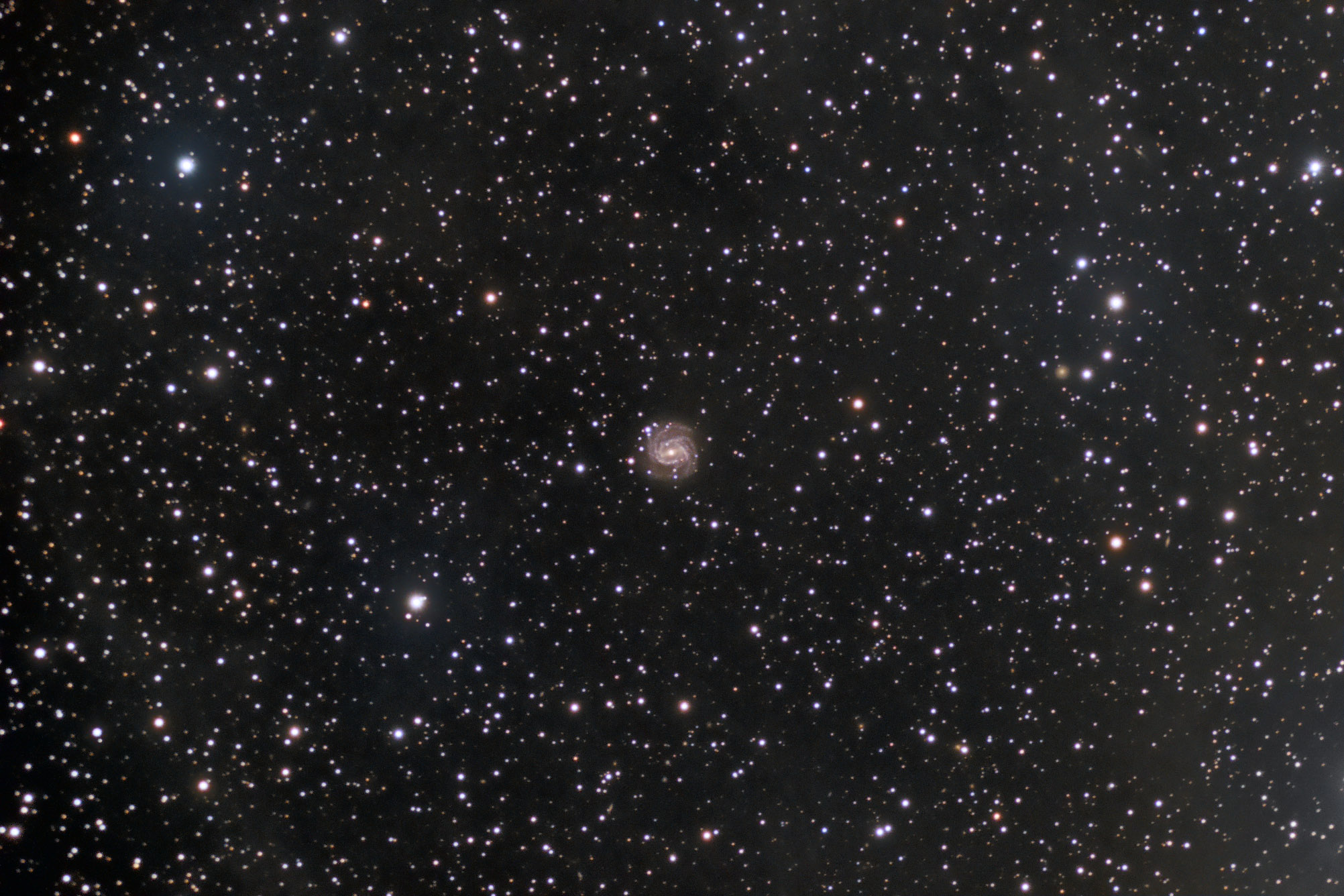| Description | Images |
Object name: NGC7080Designation(s): NGC7080, NGC 7080 is a barred spiral some 200 million light-years behind the constellation of Vulpecula so close to the border with Pegasus that the left part of the image is in Pegasus. Vulpecula is a rather galaxy free constellation. NGC 7080 is seen through some galactic cirrus. It is rather faint so I used more time than usual trying to bring it out. An unbelievable (for me) 2 hours and 20 minutes of luminance data and 40 minutes of each color taken over 4 days last July. It was located in satellite alley with nearly every sub (color and luminance) containing at least one satellite. Many nearly as faint as the cirrus. Due to the similarity in brightness, even a sigma combine failed to fully remove them after the severe stretch needed to bring out the cirrus was applied. Related Designation(s):2MASS J21300194+2643043, 2MASX J21300195+2643044, AKARI J2130020+264303, CGCG 2127.8+2630, CGCG 471-011, IRAS 21278+2629, IRAS F21278+2629, MCG +04-50-012, NGC 7080, NGC7080, NPM1G +26.0474, NSA 149192, NVSS J213001+264305, PGC 066861, SDSS J213001.92+264304.4, SSTSL2 J213001.95+264304.3, UGC 11756, UZC J213002.0+264304, [WB92] 2127+2628, |
